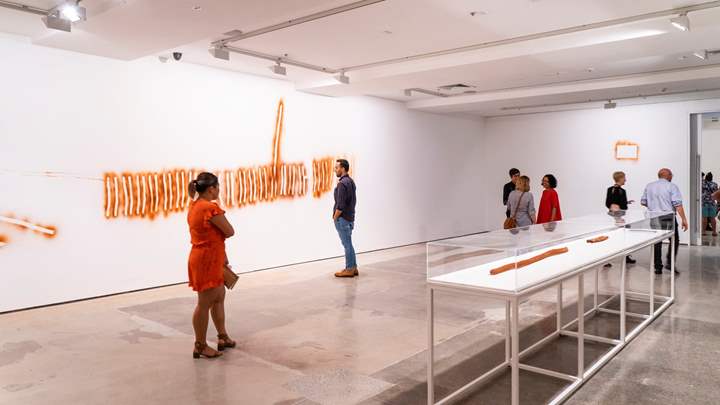What is contemporary Australian Art and How to be Excellent in it
- Written by NewsServices.com

The Australian art of the present, created by artists now working in the twenty-first century, is referred to as contemporary australian art. Modern art offers a window through which to contemplate current societal challenges that affect the whole human race and the environment in which we live. Today's contemporary artists labor in a technologically sophisticated, culturally diversified, and internationally impacted environment, which influences their work. In this work, the materials, ideas, processes, and topics are all mixed together in a way that defies categorization. Contemporary australian art is characterized by a lack of a single theory or organizing concept, making it both eclectic and varied. In the current definition of contemporary art, this original Australian art is a cultural debate that addresses contextual frameworks such as personal or cultural identity, societal problems, and issues, community, and country.
This general definition, however, is subject to some technical constraints. Since the early days of Modern Art in Australia, the term "work of today" has been used to describe a specific kind of art rather than an umbrella adjectival phrase. Founded in 1910 by Roger Fry and others, the Contemporary Art Society was created with the purpose of buying art for public institutions. In the 1930s, a slew of new organizations began utilizing the term. One of the most notable examples is the Institute of Contemporary Art in Boston, which changed its name from the Institute of Modern Art in order to better reflect its focus on contemporary art during this time period. When the Contemporary Australian Art Society bought the building in 1910, the meaning of "modern" had already been established, and the building's functions could no longer be classified as "modern."
Become Excellent in contemporary Australian Art
As a starting point, we need to remember that the contemporary word for art was coined in the 18th century, during the Enlightenment era. It wasn't until then that painting was seen more as a religious practice or a way to show off one's riches. From shoemaking to rhetoric, the term "art" was used to describe a wide variety of disciplines that are no longer regarded to be near to the realm of the fine arts in Australia. It wasn't until 1690 that the word "fine arts" (in French, "beaux-arts") first emerged. However, as the Modernist art groups developed, that principle began to take on more extreme manifestations. Paul Cezanne, Paul Gauguin, and other post-impressionists, as well as the Fauvists (Edvard Munch and Ernst Ludwig Kirchner), pushed back against the idea that art should be a representation of reality, instead allowing the visual elements of color, line, and composition to take center stage. Though the notion of art's autonomy propelled modernism, its rules have undergone substantial transformation, it hasn't matured into a critic of the art institution as a whole, and it hasn't typically broken with tradition by using traditional genre systems and subject matter.
We are well aware that any prior knowledge of history may be too trivial to be useful in appreciating modern art. There are too many unanswered questions.
- How can you tell a high-quality modern art piece from a shoddy PR campaign?
- How can you explain why these works are being shown in museums and sold for millions, when it appears like even your toddler could have done the same?
"Contemporary art is simply an amazing fake," is the simplest method to deal with your anxiety. In actuality, we should always point the finger of responsibility at two people.
It is as crucial for the audience to be able to listen to an artist (contemplate his/her work) as it is for the master to be able to speak' (to create works).
The ability to appreciate australian art is just as important as the ability to create it. You can find Australian art on https://whitfieldcollection.com.au/. An comprehension of the context and backdrop of any work requires more than just a smattering of analysis. Learning how to train your eye might be difficult when you have to deal with situations where basic "Cool" or "Not-Cool" decisions aren't adequate. Getting the audience to engage with the artist, interpret, and respond is the trick of modern art. When it comes to traditional art, the pleasure of admiring the work is enough to make us feel like arbiters of elegance, but this is not the case with modern art. "Bedcrumb" is what it's all about.
Final Words:
Modernist art groups pushed back against the idea that art should be a representation of reality. The ability to appreciate australian art is just as important as the ability to create it. An comprehension of the context and backdrop of any work requires more than just analysis. Learning how to train your eye might be difficult when you have to deal with situations where basic "Cool" decisions aren't adequate.







